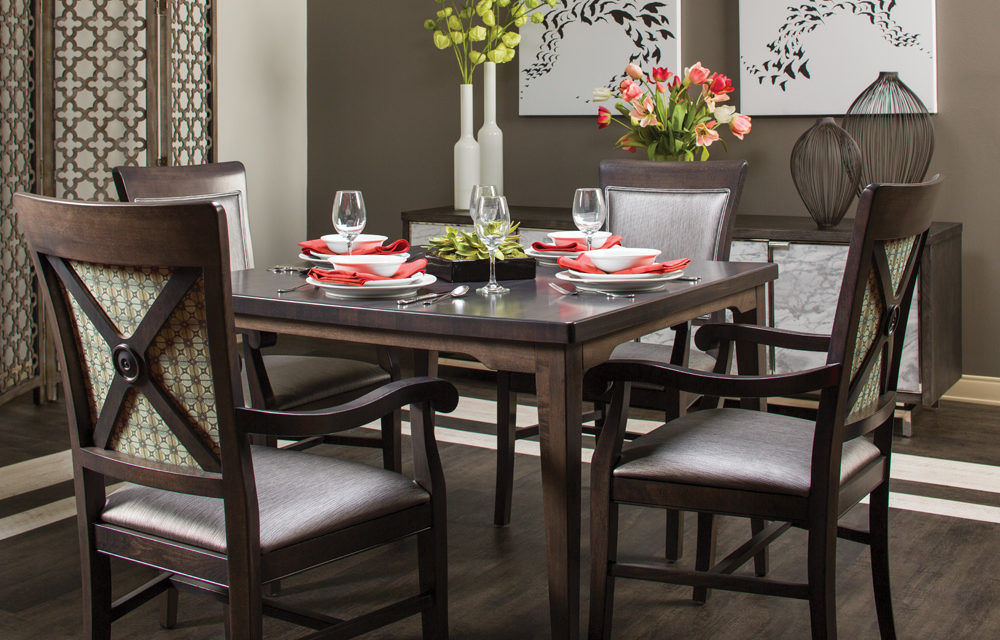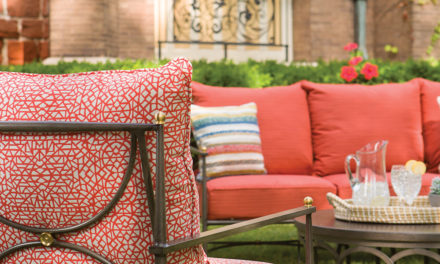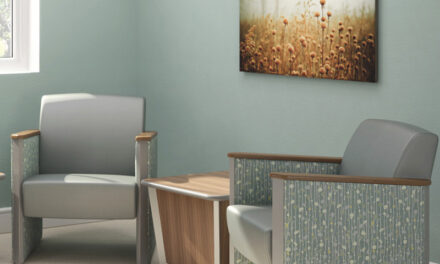When it comes to selecting dining tables for your senior living community, the process doesn’t have to be overwhelming! In assisted living, independent living, skilled nursing and nursing homes, dining room tables are an important part of the Senior Living environment and can help foster positive dining experiences for residents.
Start narrowing down your dining table healthcare furniture options with these quick tips.
1. Choose your base
When evaluating your nursing home dining room table options, start with your dining table base. Choose from solid wood, wood and metal, or all-metal bases depending on your durability and aesthetic preferences. Metal bases will work better in higher acuity settings as they’re more likely to get dinged by wheelchairs and will hold up better than wood. Solid wood bases offer warmth and a residential feel.
Pedestal bases are the most common base type because they’re less likely to interfere with dining chairs and wheelchairs. Four-leg tables offer a residential vibe and are best for communities with independent seniors.
You’ll also want to consider the height of the table base. The standard base height is 28″ to 29″ measured to the table’s underside, while wheelchair height is typically 31″ to 32″ and accommodates most wheelchairs without desk-length arms. Bases at a higher height will create a pub or bistro-like feel, which can break up a large dining space and work well in a lower acuity setting.
Explore our healthcare furniture dining table bases designed specifically for Senior Living.
2. Choose your dining table tops
When choosing the material of your tabletop, think about who will be using the tables and in what type of setting. Will the tables be in a private dining space? Will they be used for every mealtime? Will you also use the same tables for activities? The expected use will help determine the level of durability you need.
Extra-durable thermolaminate tabletops are resistant to scratches, chipping and peeling. These can be good for high-use spots or Memory Care spaces, where residents may pick at the table edges, shortening the lifespan of the table. These seamless surfaces are easy to clean and eliminate harmful bacteria growth.
Long-lasting laminate tabletops are available with a wide variety of edges. From comfortable and practical spill-boundary edges to streamlined self edges, it’s easy to find the right table edge for your community.
Choose the solid wood construction of butcherblock tabletops for high-end style. Veneer tabletops create the look and feel of solid wood and are ideal for lighter-duty applications, like private dining settings.

Spill-Guard and Spill-Retainer Edges provide an edge style that helps prevent spills from hitting residents’ laps or the floor.
Bullnose and Eased Edges are rounded for arm comfort.
T-Mold Vinyl Edges help prevent damage to the edge of your tabletop.
Shop our dining table tops to enhance your Senior Living dining room.
3. Choose your dining table finish
Our steadfast finishes are designed to withstand bumps and bangs in demanding environments. With so many options, it’s easy to find the right finish for your community’s aesthetic. Darker wood finishes offer a rich traditional look, while lighter finishes lend a modern, Scandinavian style. Remember to take into account existing woodwork to ensure your new tables complement the space – whether you want to match the existing finish or choose an opposite shade for an on-trend, eclectic look. And keep in mind that finishes may look different on a screen or in a catalog, so it’s best to order a sample to ensure you choose the right finish.
Selecting dining tables for seniors
When it comes to selecting dining tables for seniors, you want to choose nursing home dining room tables that enhance your Senior Living facility and your residents’ dining experiences. Shop our complete dining room healthcare furniture selection to furnish your space.
Contact us today to start your making an impression in your dining space, or learn how to choose the right dining chair for your community.
Are you an interior designer? Check out senior-centric design tips.




